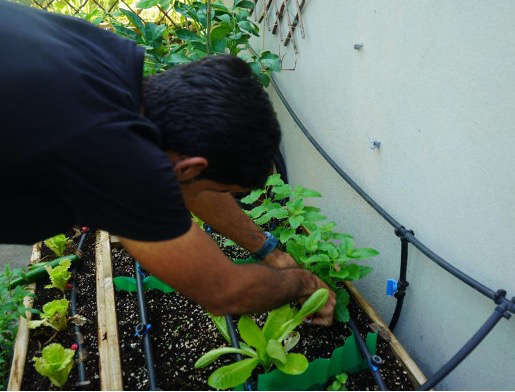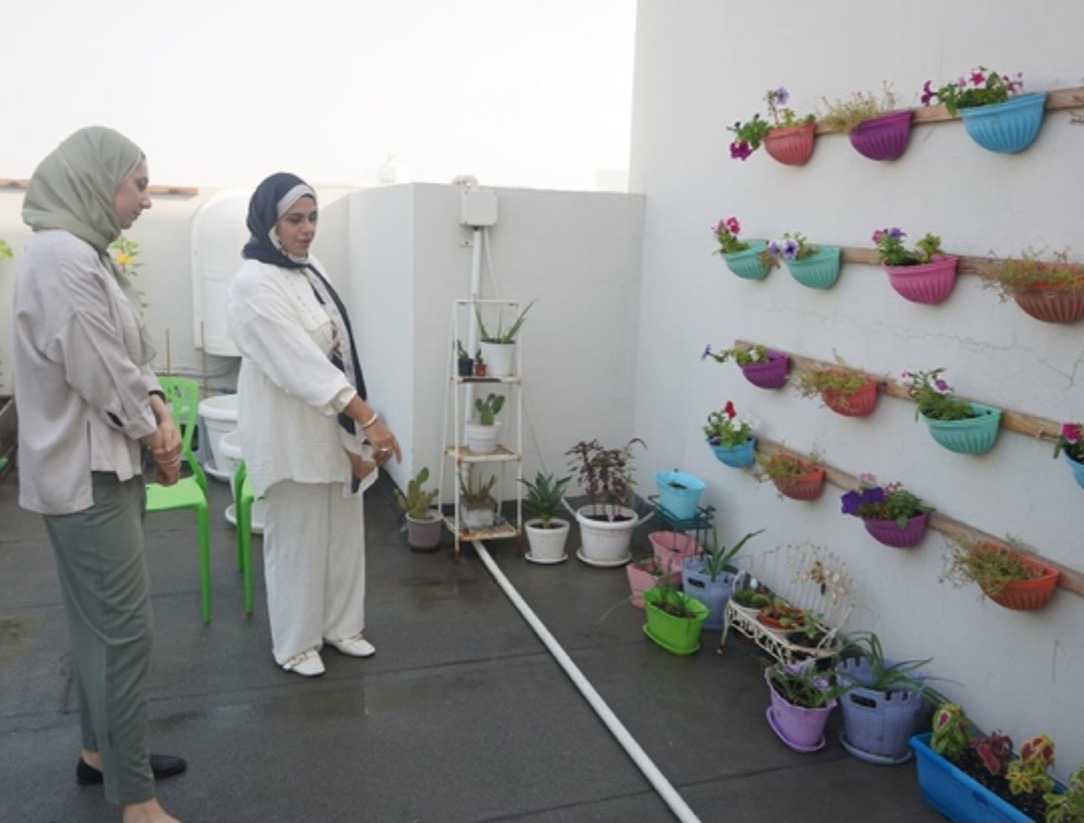
Close

Approach Words: Capacity Building, Environment Preservation, Sustainability
Public Policy Instruments: Communicative, Planning
Rooftop gardening in Bahrain is an innovative method, implemented through a pilot project, of urban agriculture to integrate vegetation through green roofs into areas with limited space for conventional gardening.1
The vision of roof gardens is to “alleviate rising temperatures and improve air quality in crowded urban areas, contributing to the development of healthier neighborhoods.”2
In addition to adding greening and enhancing the aesthetic quality of the area, the aim of rooftop gardens is to utilize abandoned rooftops, transforming them into multi-purpose and lively spaces,3 while at the same time encouraging gardening as a hobby among residents.4 By opening such areas for agriculture, improving the ecological quality of green spaces, and incorporating people in agricultural methods, the project intends to encourage creative agricultural practices among households.5

Title: An illustration of the rooftops prior to and following the "Bahrain Regains Greenery" project.
Source: Click Here

Title: Mr. AlHayki picking produce on his rooftop.
Source: Click Here

Title: Hanging pots, vertical gardening, on one of the roofs.
Source: Click Here

Title: The rooftop garden of Mrs. Shaker.
Source: Click Here
Among the key components and advantages of rooftop gardens are water conservation, enhanced soil health, reduced labor costs, organic waste production, carbon removal, and habitat creation through selective plantation.6 Another benefit of rooftop gardening in Bahrain is that it strengthens communal cohesion, encourages people to start their own gardens and educate their children about plants.7 In doing so, the project not only builds local capacities but also advocates for environmentally friendly and green practices within neighborhoods.
The residents and their entire family members, who are planting and producing in their own lots, are the very main beneficiaries.8 The husband and wife would farm, and the grandfather would do the woodwork for planting flowers and decorating.9 Besides, children get to gain familiarity with the process of utilizing various techniques to design and plant that is both climate-appropriate and environmentally benign.10
The Rooftop Gardens project in Bahrain was implemented in 2019 through multiple phases, starting with pepper seedling, then expansion in the rooftop plantations, and developing gardening skills.11 Initial efforts to enhance local knowledge on rooftop farming involved literature reviews, interviews, and learning from digital content on platforms such as YouTube.12
Today, the rooftop gardens within the project in Bahrain have become home to various types of vegetables, as well as small fruit trees, such as fig and green almond trees.13 Most of the participants who planted gardens in their houses did so with the aim of creating a greener, more attractive environment and pursuing a hobby. Since the first cycle of the project, many of them use their rooftops regularly, eagerly waiting for each season’s production.14

Owner/Developer

Contractor/Implementer
In collaboration with Bahrain’s Ministry of Municipalities Affairs and Agriculture and the National Initiative for Agricultural Development, the United Nations Food and Agriculture Organization (FAO) and the United Nations Human Settlements Programme (UN-Habitat) conducted a survey aimed at understanding the motivations and practices of Bahraini residents engaged in gardening, particularly on rooftops. The survey sought to gather insights into how urban greening, beautification, and gardening as a hobby are practiced within the community, supporting initiatives to enhance sustainable urban living in Bahrain.21
Project Link
Endnotes
References